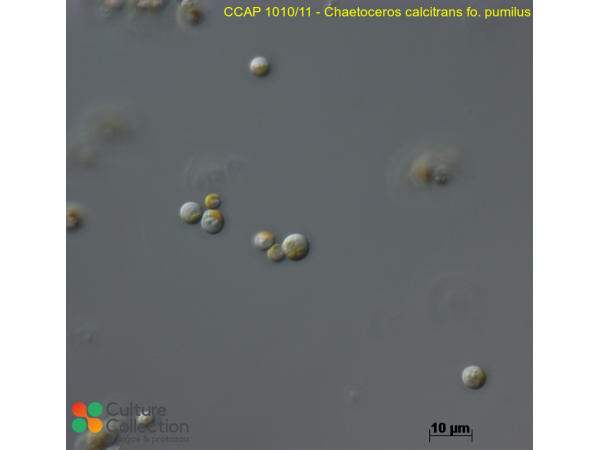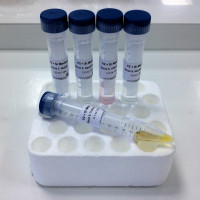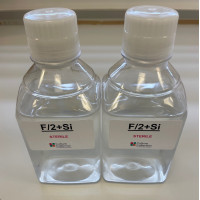References [ 22 ]
Moniz MBJ & Kaczmarska I (2010) Barcoding of diatoms: Nuclear encoded ITS revisited. Protist 161: 7-34.
Troedsson C, Ganot P, Bouquet J-M, Aksnes DL & Thompson EM (2007) Endostyle cell recruitment as a frame of reference for development and growth in the Urochordate Oikopleura dioica. The Biological Bulletin 213: 325-334.
DOI: none
Sandaa R-A, Brunvold L, Magnesen T & Bergh Ø (2008) Monitoring the opportunistic bacteria Pseudoalteromonas sp. LT-13 in a great scallop, Pecten maximus hatchery. Aquaculture 276: 14-21.
Moreau D, Tomasoni C, Jacquot C, Kaas R, Le Guedes R, Cadoret J-P, Muller-Feuga A, Kontiza I, Vagias C, Roussis V & Roussakis C (2006) Cultivated microalgae and the carotenoid fucoxanthin from Odontella aurita as potent anti-proliferative agents in bronchopulmonary and epithelial cell lines. Environmental Toxicology and Pharmacology 22: 97-103.
Hatton AD & Wilson ST (2007) Particulate dimethylsulphoxide and dimethylsulphoniopropionate in phytoplankton cultures and Scottish coastal waters. Aquatic Sciences - Research Across Boundaries 69: 330-340.
Magnesen T & Jacobsen A (2012) Effect of water recirculation on seawater quality and production of scallop (Pecten maximus) larvae. Aquacultural Engineering 47: 1-6.
Wilson ST (2007) The production of biogenic gases in the marine environment. A Thesis presented for the degree of Doctor of Philosophy at the Open University -: 319 pp.
DOI: none
Volkman JK, Jeffrey SW, Nichols PD, Rogers GI & Garland CD (1989) Fatty acid and lipid composition of 10 species of microalgae used in mariculture Journal of Experimental Marine Biology and Ecology 128: 219-240.
DOI: none
Peperzak L & Brussaard CPD (2011) Flow cytometric applicability of fluorescent vitality probes on phytoplankton Journal of Phycology 47: 692-702.
Pronker AE, Peene F, Donner S, Wijnhoven S, Geijsen P, Bossier P & Nevejan NM (2013) Hatchery cultivation of the common cockle (Cerastoderma edule L.): From conditioning to grow-out. Aquaculture Research -: 1-11.
Marti-Solans J, Ferrandez-Roldan A, Godoy-Marin H, Badia-Ramentol J, Torres-Aguila NP, Rodriguez-Mari A, Bouquet JM, Chourrout D, Thompson EM, Albalat R & Canestro C (2014) Oikopleura dioica culturing made easy: A low-cost facility for an emerging animal model in EvoDevo. Genesis 53: 183-193.
Slocombe SP, Zhang QY, Ross M, Anderson A, Thomas NJ, Lapresa A, Rad Menéndez C, Campbell CN, Black KD, Stanley MS & Day JG (2015) Unlocking nature's treasure-chest: Screening for oleaginous algae. Scientific Reports 5: 09844.
Réveillon D, Abadie E, Séchet v, Masseret E, Hess P & Amzil Z (2015) β-N-methylamino-L-alanine (BMAA) and isomers: Distribution in different food web compartments of Thau lagoon, French Mediterranean Sea. Marine Environmental Research 110: 8-18.
Bouquet JM, Spriet E, Troedsson C, Ottera H, Chourrout D & Thompson EM (2009) Culture optimization for the emergent zooplanktonic model organism Oikopleura dioica. Journal of Plankton Research 31: 359-370.
Olsen BR, Dahlgren K, Schander C, Bamstedt U, Rapp HT & Troedsson C (2012) PCR-DHPLC assay for the identification of predator-prey interactions. Journal of Plankton Research 34: 277-285.
Réveillon D, Séchet V, Hess P & Amzil Z (2016) Production of BMAA and DAB by diatoms (Phaeodactylum tricornutum, Chaetoceros sp., Chaetoceros calcitrans and, Thalassiosira pseudonana) and bacteria isolated from a diatom culture. Harmful Algae 58: 45-50.
Serive B, Nicolau E, Bérard JB, Kaas R, Pasquet V, Picot L & Cadoret JP (2017) Community analysis of pigment patterns from 37 microalgae strains reveals new carotenoids and porphyrins characteristic of distinct strains and taxonomic groups. PLoS ONE : e0171872.
Polimene L, Clark D, Kimmance S & McCormack P (2017) A substantial fraction of phytoplanktonderived DON is resistant to degradation by a metabolically versatile, widely distributed marine bacterium PLoS ONE : e0171391.
Diéguez AL, Balboa S, Magnesen T, Jacobsen A, Lema A & Romalde JL (2019) Comparative study of the culturable microbiota present in two different rearing systems, flow‐through system (FTS) and recirculation system (RAS), in a great scallop hatchery Aquaculture Research 51: 542-556.
Hughes AH, Magot F, Tawfike A, Rad-Menéndez C, Thomas N, Young LC, Stucchi L, Carettoni D, Stanley MS, Edrada-Ebel R & Duncan KR (2021) Exploring the chemical space of macro- and micro- algae using comparative metabolomics Microorganisms 9: 311.
Penhaul Smith JK, Beveridge C, Laudicella VA, Hughes AD, McEvoy L & Day JG (2021) Utilising mixotrophically cultured "designer algae" as blue mussel larval feed. Aquaculture International -: -.
Hughes AH, Magot F, Tawfike AF, Rad Menéndez C, Thomas N, Young LC, Stucchi L, Carettoni D, Stanley MS, Edrada-EBel R & Duncan KR (2021) Exploring the chemical space of macro- and micro-algae using comparative metabolomics. Microorganisms 9: 311.




